Last Updated on November 21, 2025 by Emma Fajcz | Published: July 8, 2024
Every visitor to Ireland is wonderstruck by the country’s green pastures, hospitality, musical and literary legacy… and spirits! Along with the harp and the shamrock, beer — and more specifically Guinness — is one of Ireland’s national symbols. What is Guinness, you may be wondering, and it’s a very good question.
Guinness embodies craftsmanship, heritage, tradition, and national pride. From the joyful craic of Irish pubs to the pouring ceremony, Guinness has played a huge role in threading the nation’s social and cultural fabric over centuries.
That said, the numbers are astounding: brewed in almost 50 countries, and available in more than 120, sales in 2011 amounted to 850,000,000 liters. Dublin’s Guinness Storehouse has become a global phenomenon, attracting more than 20 million visitors since its opening.
For many years, Guinness has been considered good for you and your health. When consumed in moderation, it provides antioxidants, supports heart health, and supplies a small amount of iron. It has fewer calories than many other beers, and contains dietary silicon, which ensures bone health. Guinness also has probiotics and several B vitamins.
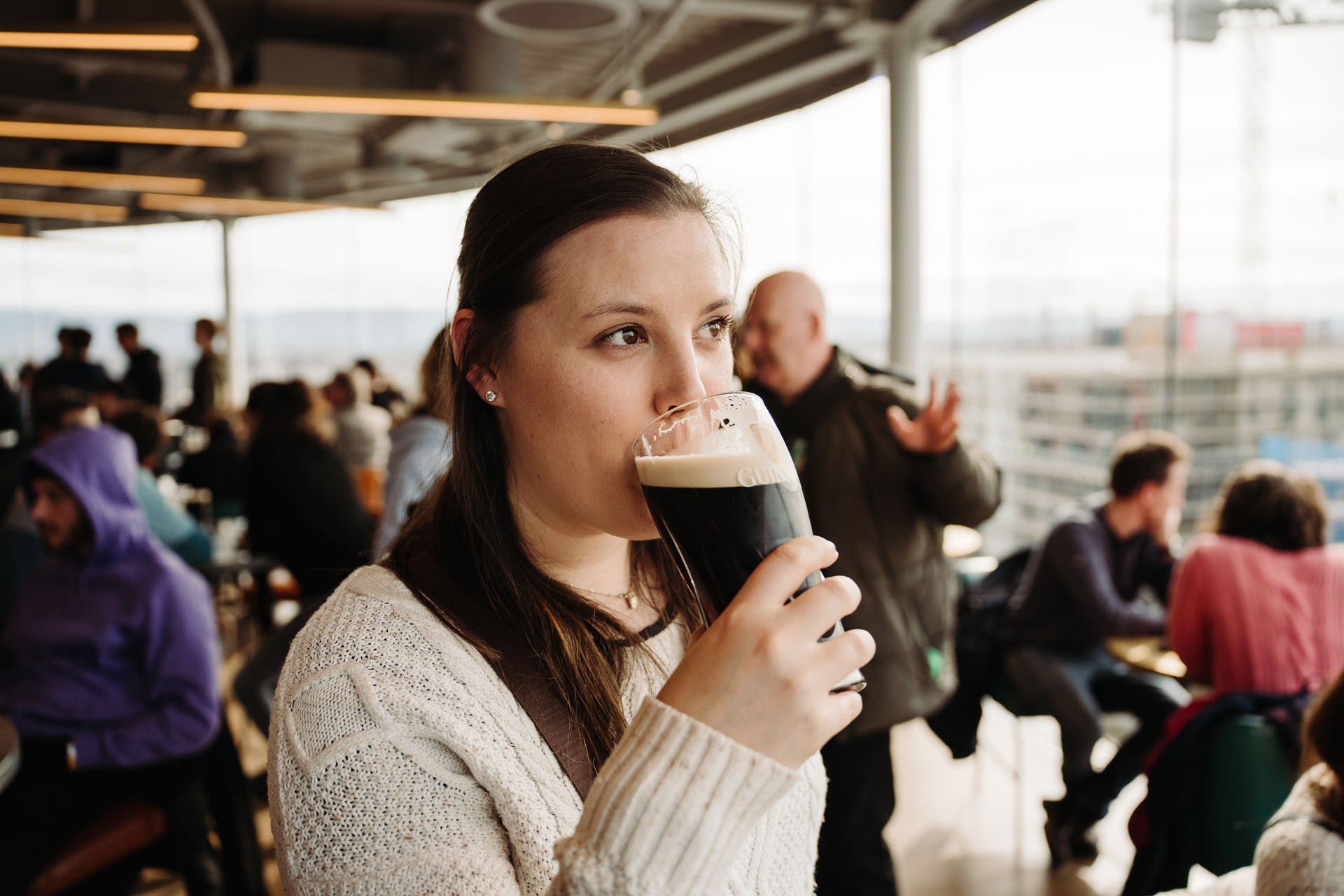
What's Included
The origins of Guinness
Not many success stories begin with a 9,000-year lease. The year is 1759, and Arthur Guinness is the mastermind who signed the contract allowing him to brew at the unused St. James Brewery in Dublin.
At £45 per annum, he shipped six-and-a-half barrels of his first ale to Great Britain within his first ten years of business, started selling the dark beer porter in 1778, and as hard work would have it, sales soared from 350,000 barrels in 1868 to 779,000 barrels in 1876.
In October 1886, more than 200 years after its creation, Guinness became a public company and sold an average of 1.138 million barrels annually.
Following the Anglo-Irish War, in 1932,the company moved its headquarters to London. In 1997, Guinness merged with Grand Metropolitan, setting up the multinational alcoholic beverage company Diageo. The stout production returned to Ireland, ensuing the closure of the brewery in London.
The Guinness family work stretches beyond crafting the world-known brew. They introduced unparalleled welfare schemes for its 5,000 employees in 1900. They also engage in various philanthropic endeavors. Their milestones include the restoration of St. Patrick’s Cathedral in the 1800s, the foundation of The Guinness Trust in London, and The Iveagh Trust in Dublin, in the last decade of the nineteenth century. Impressive is an understatement.
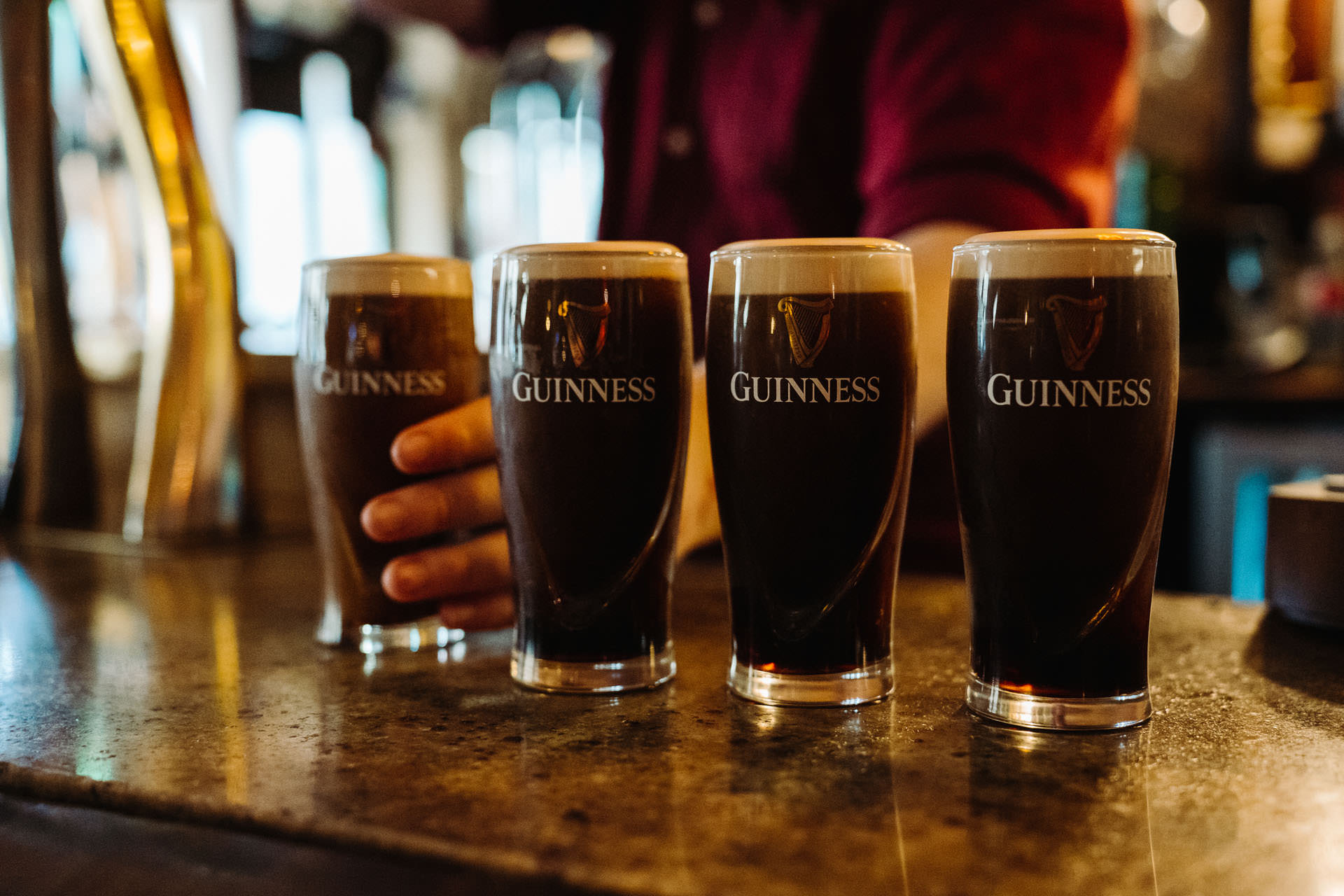
How is Guinness made
Let’s start with the basics: what is Guinness made of? Water, barley (contributing to the classic dark ruby color), hops (giving bitterness to the sweet malt), and yeast go into every pint. The latter is essential for fermentation.
Now, the process that makes it what it is: firstly, the milled barley is combined with hot water into a mash. The result is then boiled with hops, forming the sugar-rich wort.
This liquid is cooled and transferred to vessels. Yeast is added for fermentation before the beer is left to mature and acquire its flavors.
La crème de la crème: 1959 saw Guinness introduce nitrogen in its recipe, whose bubbles are responsible for the stout’s creamy and smooth texture.
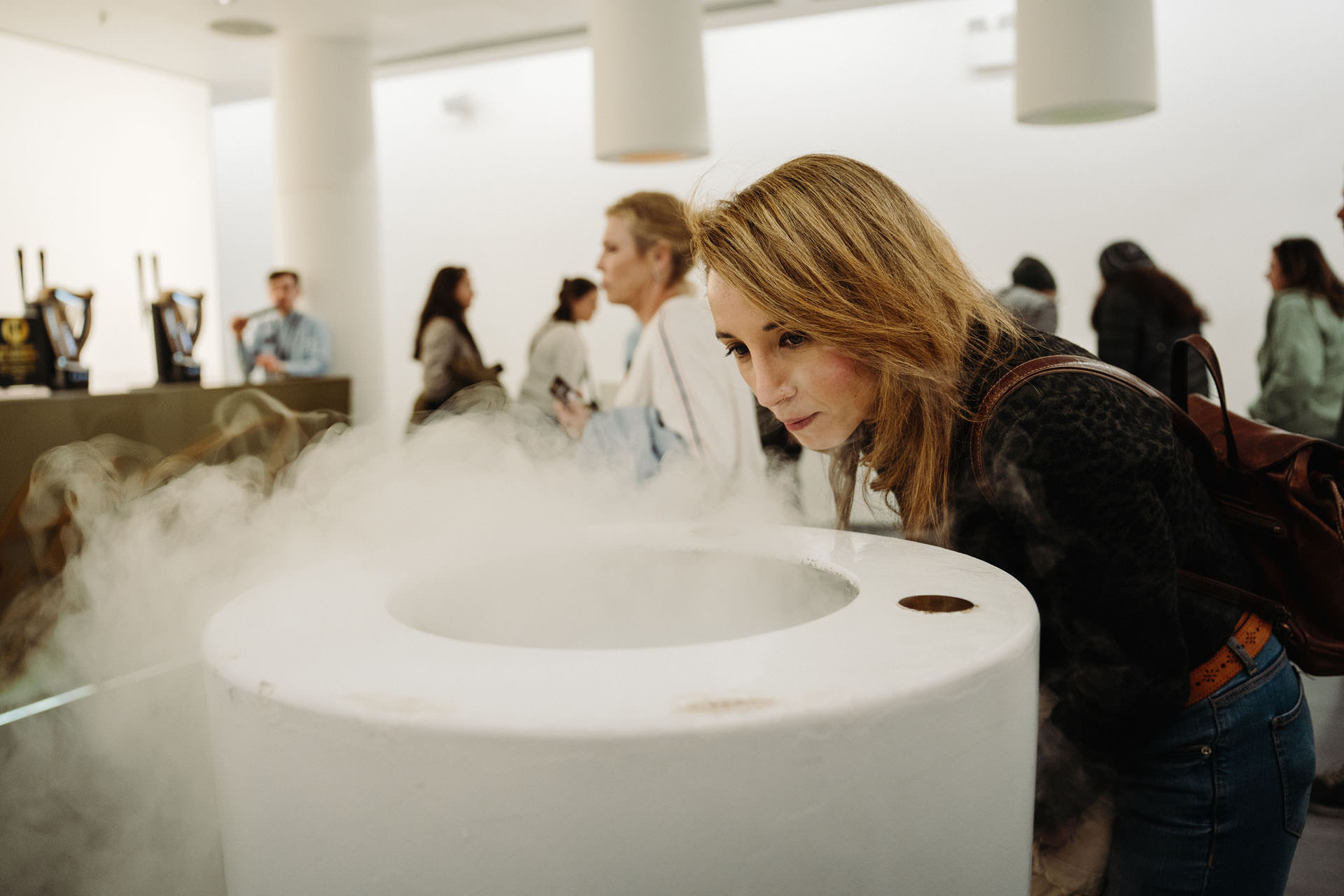
Different types of Guinness
Besides the traditional one, the Irish brand has branched out its produce to cater to all tastes and audiences globally. Here are some of its most popular options, and be warned, they stretch beyond beer.
Curious palates have been wondering what an alcohol-free stout would taste like, and voilà, Guinness has (literally) served. Guinness 0.0 is made at the St James’s Gate brewers, using the same natural ingredients; water, barley, hops, and yeast, and gently removing the alcohol through cold filtering. That way, the beer doesn’t undergo thermal stress, thus preserving its rich character.
The result is the same dark, ruby red draught, balanced with hints of chocolate and coffee.
The next mouth-watering liquid, Hop House 13, is the result of relentless experimentation by the experts at St. James’s Gate. This golden lager is crisp, sweet, and fruity, thanks to hints of apricot and peach. What about its central ingredient? Of course, we’re talking about hops, which expert brewer Peter Simpson reinforced to create this fully-flavored golden liquid.
And we couldn’t close this section without sticking to our promise. Guinness Cold Brew combines the best of both worlds: coffee and stout, bitter and sweet, smooth and intense, roast and caramel. At only 4% alcohol content, this is a creamy and balanced marriage in every mouthful.
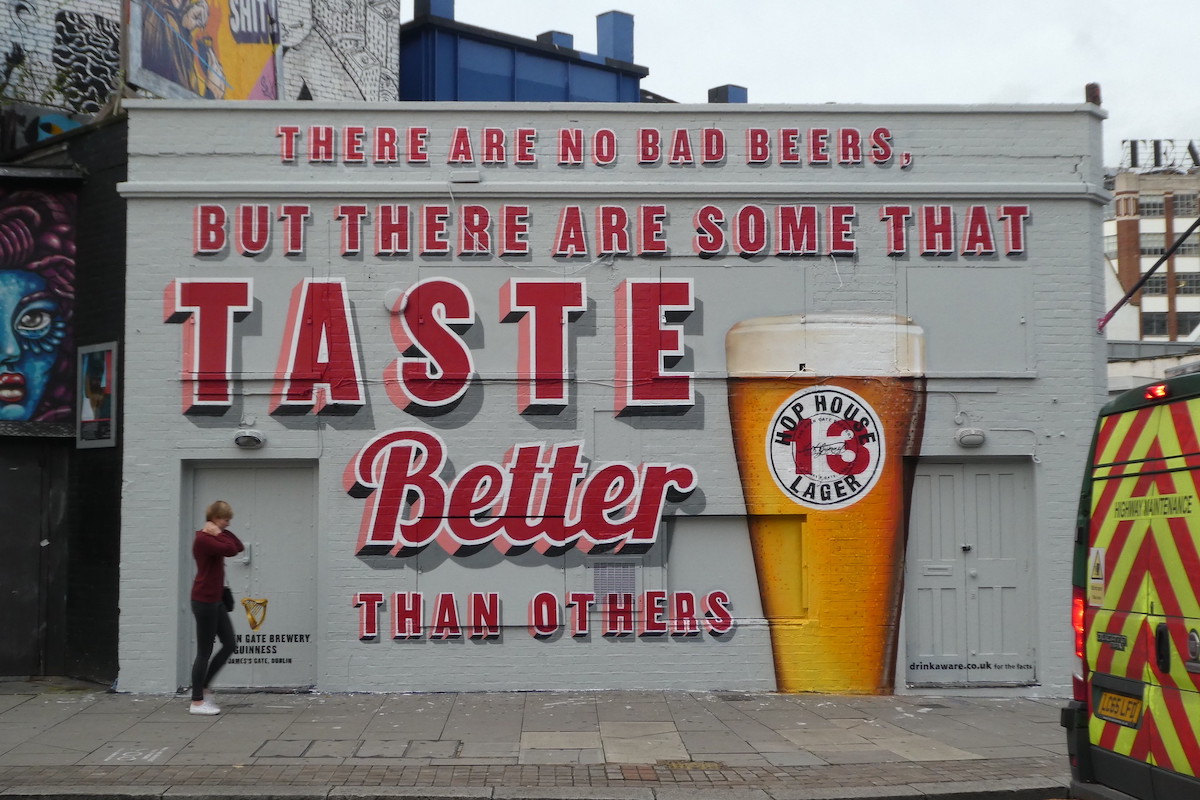
An international beer
Speaking of international, it is one of Ireland’s best-travelled exports. So, much so that U.S. fans can enjoy their own, self-brewed blonde beer in Baltimore.
Guinness Baltimore Blend packs the best Irish tradition and the vibrant, cheerful American spirit. A sip of the malty and hoppy take on Guinness is a trip to citrus land, with grapefruit and orange peel notes, rounded up with a bitter aftertaste. It’s exquisitely refreshing, and 100% Bawlmer.
If you live outside Ireland, chances are you might have already tried a Guinness Foreign Extra Stout. Back in the stout territory, this robust and roasted offering is the result of Arthur Guinness’s wanderlust, and his urging desire to bring his creation to uncharted territories. Its intense notes of dark chocolate, caramel, and dried fruits won’t go unnoticed.
Fun fact: If life takes you to Malaysia and you order a Black Bulldog, you’ll get a Guinness Foreign Extra Stout. Exporters used animal symbols to identify all sorts of brews abroad.
If you’re traveling to Dublin, though, you may find that in the city the taste of Guinness is even better. This is not only because of how they’re prepared, but also how they’re served by professionals. Make sure to visit some local pubs to try the Best Guinness in Dublin.

Pouring the perfect Guinness
There is one right way to pour the perfect pint of Guinness: hold the glass at a 45° angle (preferably a tulip-shaped one in order to ensure the typical creamy foam). It should be left to settle on a flat surface for 119.5 seconds. This will let it rise and allow its foamy head to appear.
Guinness tastes different in Ireland than elsewhere? Many suggest that a glass of stout tastes better in the Celtic country, and there is certainly an explanation for that. For starters, it will be fresher, as you’re more likely to drink it from a fresh keg with clean draft lines in Ireland, in addition to the taste being altered by transportation. The joyful ambiance at the pub and an added sense of authenticity also factor in when enjoying the dark nectar.
Surprisingly, Ireland is not the biggest Guinness-consuming country in the world? First in the rank is the UK, followed by Nigeria, where the black stuff became popular after the British invasion. Ireland rounds off the top three, followed closely by the U.S.
If you feel like enjoying a Guinness in Dublin in good company but don’t know where to start, we’re happy to show you around with a pint in hand. Our Best of Dublin: Jameson Distillery & Guinness Brewery Guided Tour will allow you to learn and taste everything from both Jameson and Guinness, so you’re one local more next time you go to an Irish Pub. Sláinte!
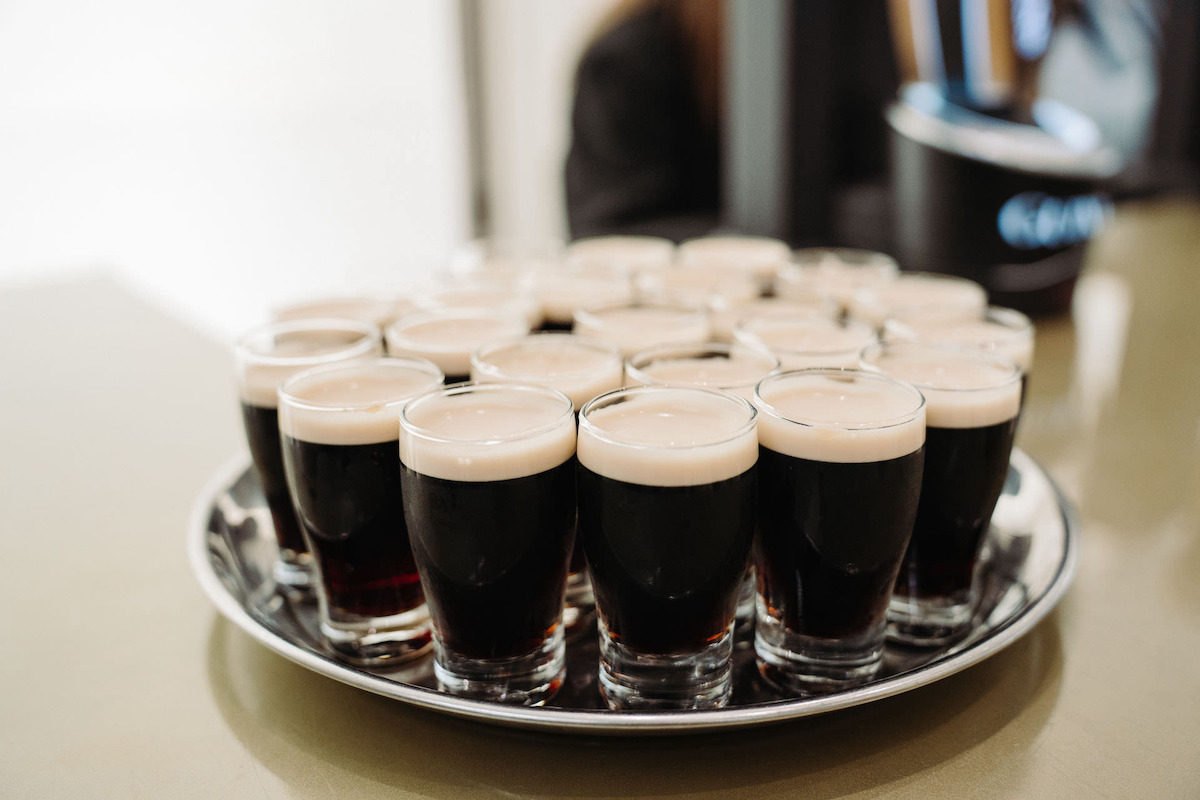
Explore International Cuisine Like a Local
Join one of our top-rated food tours that are offered in many cities throughout the world! With the help of our expert local guides, you’ll get to see, hear, and taste your way through these cities and learn about their fascinating histories and cultures.









